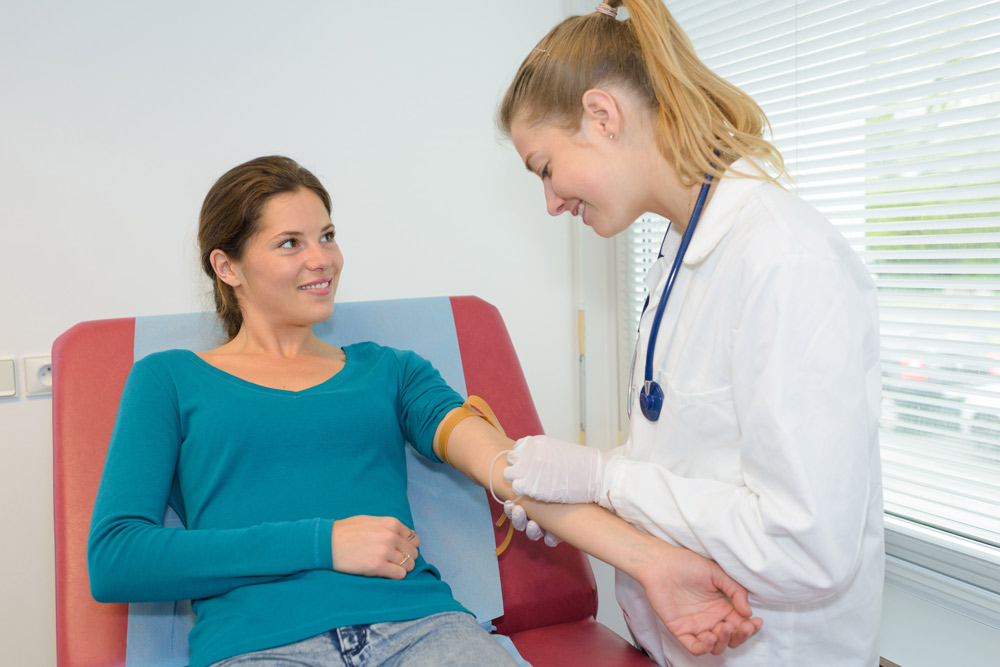**Title: Job Description for Phlebotomist: Everything You Need to Know**
**Introduction:**
A career as a phlebotomist can be rewarding, fulfilling, and dynamic. Phlebotomists play a crucial role in the healthcare industry by drawing blood samples from patients for various purposes, such as medical tests, donations, or research. In this article, we will delve into the job description for a phlebotomist, including their responsibilities, skills required, educational qualifications, and career prospects.
**Responsibilities of a Phlebotomist:**
1. **Drawing Blood:** Phlebotomists are primarily responsible for drawing blood from patients with precision and care. They must follow proper procedures to ensure the safety and comfort of the patient.
2. **Labeling and Storing Samples:** After collecting blood samples, phlebotomists must properly label and store them for testing or analysis. Attention to detail is crucial to avoid mix-ups or contamination.
3. **Maintaining Equipment:** Phlebotomists are responsible for maintaining and sterilizing their equipment, such as needles, tubes, and trays, to prevent infections and ensure accuracy.
4. **Interacting with Patients:** Phlebotomists must have excellent communication skills to help patients feel at ease during the blood drawing process. Compassion and empathy are essential traits in this role.
5. **Documenting Information:** Phlebotomists are required to accurately document patient information, sample details, and test results in medical records for reference and compliance purposes.
**Skills Required for a Phlebotomist:**
- **Phlebotomy Skills:** Proficiency in venipuncture and capillary puncture techniques is essential for a phlebotomist.
– **Attention to Detail:** Accuracy in labeling samples and documenting information is critical to avoid errors.
– **Communication Skills:** Strong interpersonal skills are necessary to communicate effectively with patients and healthcare professionals.
- **Empathy:** Phlebotomists must have empathy and compassion towards patients who may be anxious or fearful.
– **Teamwork:** Collaborating with other healthcare professionals is an integral part of the job.
**Educational Qualifications for a Phlebotomist:**
– **High School Diploma or GED:** A high school diploma or equivalent is typically required to pursue a career as a phlebotomist.
– **Phlebotomy Training Program:** Completion of a phlebotomy training program from a vocational school or community college is essential. Programs may include classroom instruction and hands-on practice.
– **Certification:** While certification is not always mandatory, many employers prefer phlebotomists who are certified by recognized organizations such as the National Healthcareer Association (NHA) or the American Society for Clinical Pathology (ASCP).
**Career Prospects for Phlebotomists:**
Phlebotomists have a wide range of career opportunities in various healthcare settings, including hospitals, clinics, laboratories, blood banks, and research facilities. With experience and further education, phlebotomists can advance their careers into specialized roles such as phlebotomy supervisor, laboratory manager, or medical laboratory technician.
**Conclusion:**
a career as a phlebotomist offers a unique blend of patient care, technical skills, and personal fulfillment. By mastering the responsibilities, acquiring the necessary skills, and obtaining the right education, you can embark on a rewarding journey in the healthcare industry as a phlebotomist. If you are passionate about helping others and have a keen interest in the medical field, phlebotomy may be the perfect profession for you.
Remember, being a phlebotomist is not just about drawing blood; it’s about making a difference in the lives of patients and contributing to the larger healthcare community.
